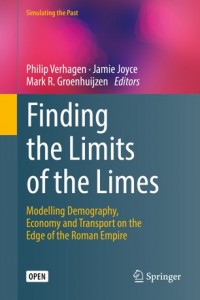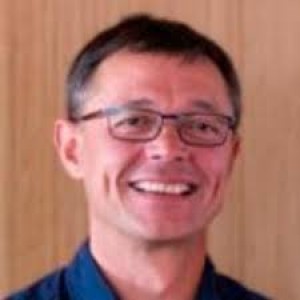
Finding the Limits of the Limes :Modelling Demography, Economy and Transport on the Edge of the Roman Empire
This open access book demonstrates the application of simulation modelling and network analysis techniques in the field of Roman studies. It summarizes and discusses the results of a 5-year research project carried out by the editors that aimed to apply spatial dynamical modelling to reconstruct and understand the socio-economic development of the Dutch part of the Roman frontier (limes) zone, in particular the agrarian economy and the related development of settlement patterns and transport networks in the area. The project papers are accompanied by invited chapters presenting case studies and reflections from other parts of the Roman Empire focusing on the themes of subsistence economy, demography, transport and mobility, and socio-economic networks in the Roman period. The book shows the added value of state-of-the-art computer modelling techniques and bridges computational and conventional approaches. Topics that will be of particular interest to archaeologists are the question of (forced) surplus production, the demographic and economic effects of the Roman occupation on the local population, and the structuring of transport networks and settlement patterns. For modellers, issues of sensitivity analysis and validation of modelling results are specifically addressed. This book will appeal to students and researchers working in the computational humanities and social sciences, in particular, archaeology and ancient history.This open access book demonstrates the application of simulation modelling and network analysis techniques in the field of Roman studies. It summarizes and discusses the results of a 5-year research project carried out by the editors that aimed to apply spatial dynamical modelling to reconstruct and understand the socio-economic development of the Dutch part of the Roman frontier (limes) zone, in particular the agrarian economy and the related development of settlement patterns and transport networks in the area. The project papers are accompanied by invited chapters presenting case studies and reflections from other parts of the Roman Empire focusing on the themes of subsistence economy, demography, transport and mobility, and socio-economic networks in the Roman period. The book shows the added value of state-of-the-art computer modelling techniques and bridges computational and conventional approaches. Topics that will be of particular interest to archaeologists are the question of (forced) surplus production, the demographic and economic effects of the Roman occupation on the local population, and the structuring of transport networks and settlement patterns. For modellers, issues of sensitivity analysis and validation of modelling results are specifically addressed. This book will appeal to students and researchers working in the computational humanities and social sciences, in particular, archaeology and ancient history.
forme de livre
Gratuite
Commentaires
Aperçu de la notation
Sélectionnez une ligne ci-dessous pour filtrer les avis.
0
0
0
0
0
0
Global
Notes moyennes des clients
Critique de ce livre
Partagez vos réflexions avec d'autres lecteurs
Le plus populaire
description_of_book
This open access book demonstrates the application of simulation modelling and network analysis techniques in the field of Roman studies. It summarizes and discusses the results of a 5-year research p
Informations supplémentaires
À propos des auteurs

Philip Verhagen is assistant professor at the Faculty of Humanities, Vrije Universiteit Amsterdam, specialized in computer applications and quantitative methods in archaeology, with an emphasis on GIS, spatial analysis and modelling. He has held a position as post-doctoral research fellow at Vrije Universiteit Amsterdam from 2009-2017. Before that, he has worked as a GIS specialist in contract-based archaeology with Dutch companies RAAP (1992-2005) and ACVU-HBS (2005-2008). He has been Publication Officer of Computer Applications and Quantitative Methods from 2011-2016, and is currently Managing Editor of the newly started Journal of Computer Applications in Archaeology. Since 1 January 2018, dr. Verhagen is Scientific Director of ARCHON, the Dutch Research School for Archaeology.
Philip Verhagen(editor)
Jamie Joyce(editor)
Table des matières



